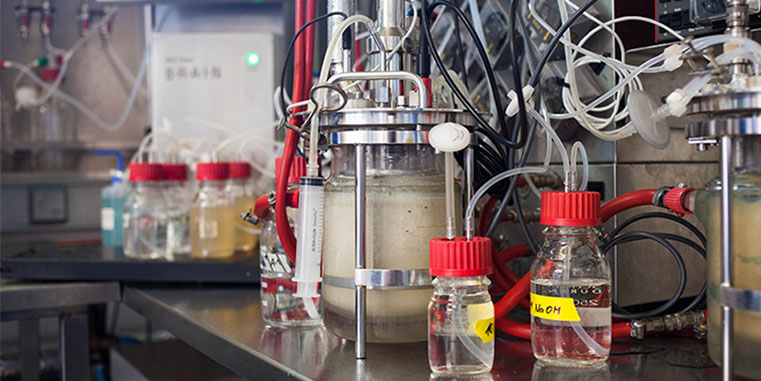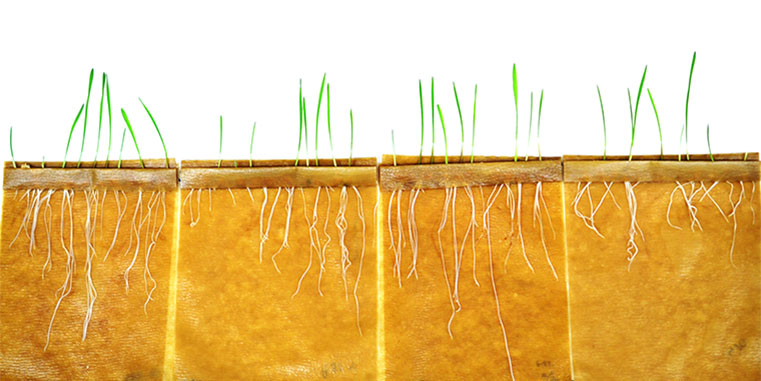





The FunChi consortium of two SME and four academic partners from Germany, Netherlands, and Spain will overcome two main problems in industrial scale fungal fermentation as required for the transition from an oil-based to a bio-based economy, namely high viscosity at high cell densities hindering stirring and oxygen transfer, and large amounts of mycelial wastes. Both problems will be addressed by targeting the cell wall biosynthetic machinery of a high performance albino production strain of Aspergillus niger. Viscosity will be reduced by aiming at shorter, more branched hyphae leading to micro-pelleted growth. The chitin content of the fungal cell wall will be increased and its incorporation into the complex cell wall will be modified so that it can be more easily extracted with better yields and higher quality in terms of polymer size and purity. Thus, the mycelial waste fraction will be converted into a high added-value product.
Chitosan is one of the most promising functional biopolymers, but commercial chitosans are mostly derived from chitin extracted from shrimp shell wastes. This animal origin involves two potential problems, i.e. limited supply leading to rather high costs, and the possibility of allergen or viral contamination. Fungal cell walls are a known alternative source of chitin, but its covalent incorporation into the fungal cell wall has so far hindered the development of a commercially viable process for the large scale extraction of high quality chitin from fungal mycelia. By biotechnologically modifying the cell wall of a fungus which is used at large industrial scale, such that it contains more chitin which is more easily extractable, we will overcome both of these hurdles for market entry and penetration. Proof-of-principle will be reached by the knowledge-based development of a plant biostimulant based on fungal chitosan that will allow significant reductions of chemical inputs in agriculture, benefiting both the environment and the consumer.